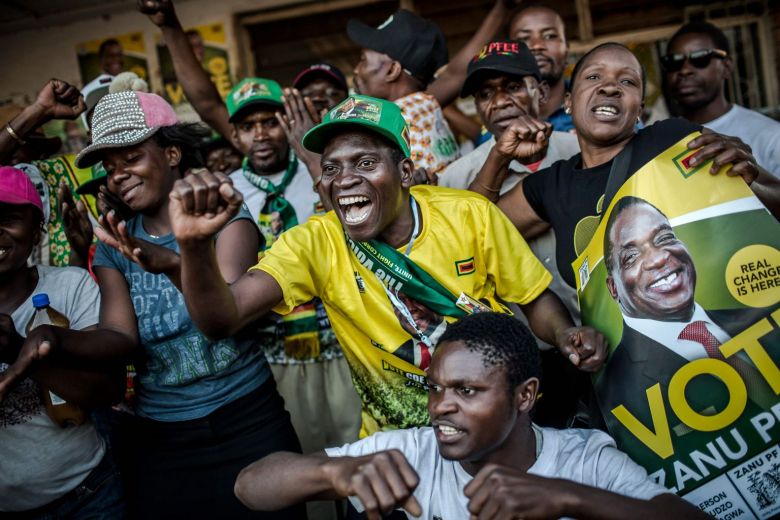After decades of economic stagnation and poverty, the Zimbabwean economy is on the rise again. This economic growth is premised on measures deployed by President Emmerson Mnangagwa, which include the Vision 2030 and the Transitional Stabilization Program. Although these reforms are already yielding dividends, it is imperative for the administration to ensure the dividends are built around strong foundations of social and political freedoms for any chance of sustainability.
While addressing Parliament in Harare on the state of the economy, Finance and Economic Development Minister, Professor Mthuli Ncube explained how the Zimbabwean economy is growing beyond expectations. According to him, government revenue in the first quarter of 2019 surpassed initial targets by 8.2 percent, which created an excess revenue of $146 million. And that government expenditures within the same period were also contained below the target of $218.9 million, resulting in a budget surplus of $443.1 million.
These are obviously impressive financial improvements from the Zimbabwe of the last decade. But what are the specific changes that made these improvements possible? To answer this question, one must take a closer look at what the current government is doing right.
Mugabe’s regime seized white-owned farms and gave them to cronies, destroying Zimbabwe’s agricultural sector. When the money ran out he printed more creating the worst hyperinflation in history. The value of the currency plummeted, causing the cost of goods and services to skyrocket. In 2008 inflation hit 500,000,000,000 percent. — The Economist
Vision 2030 and The Transitional Stabilization Program
Vision 2030 is the mainframe of Zimbabwe’s economic reform. It is a policy aimed at modernizing the economy and reviving high-value industries, which is part of a broader drive towards making Zimbabwe a middle-income economy by 2030.
In 2017, the Mugabe administration committed to the United Nations’ Sustainable Development Goals (UNSDGs) Agenda 2030. This program formed the cure of Mnangagwa’s Vision 2030. The implementation of this agenda, however, did not take off until 2018 due to the crisis that followed the regime change. But with the UNSDGs program now comprehensively adopted, the economy is now opening up to investors.
This disposition of the economy can also be attributed to reforms targeted at improving the ease of doing business in Zimbabwe. Problems related to the protection of the rights of investors, contracts enforcement, affordable credit system, and permits issuance are getting serious attention.
The Transitional Stabilisation Program was launched in 2018 with the purpose of operationalizing the Vision 2030. It outlines and embodies necessary policies, strategies, projects and institutional reforms that will guide Zimbabwe’s social and economic development interventions.
The also focuses on immediate ‘quick-wins’ that are aligned to reality and capacity, while laying a robust base for economic growth. It aims to contain fiscal deficit by plugging leakages, moderating wage bills and shrewd management of government expenditure.
What must Zimbabwe do to ensure this growth is sustained?
Economic growth and development are inextricably related to political and economic freedom; They flourish where property rights and political freedom are guaranteed. Zimbabwe should avoid temptations to experiment with interventionist policies that crumbled the country’s economy under Robert Mugabe. One of such policies is the discriminatory policy toward businesses owned by individuals that are not supporters of the ruling Zimbabwe African National Union-Patriotic Front.
Zimbabwe also struggled because of the absence of free and independent institutions that could have served criticism to some of the senseless policies that destroyed the country. Mugabe was famous for his ruthlessness against such institutions, especially political opposition and independent press. Mnangagwa should not repeat the same blunder as evidence have clearly shown that economic prosperity can greatly depend on tolerating political opposition and recognizing the independence of the press. This should be followed by more openness to trade.
Although Zimbabwe committed to the African Continental Free Trade Area Agreement, it should pursue more bilateral trade agreements with other countries—many with who Mugabe had severed relations. The bilateral trade should be focused on specific industries where it has a comparative advantage like cotton, tobacco, ferroalloys and precious stones. Such trade agreements will provide space for further economic growth.
Mnangagwa and his cabinet should also be diligent in the fight against corruption. A corrupt system will never allow the economy to reach its full potential. And regardless of the fact that Mnangagwa already made the fight against corruption a priority for his administration, it needs to be more sincere and tough. The country’s police and the anti-graft agency needs to be truly independent and empowered.
How the World can Help
In the last few decades, though, the United Kingdom, the United States, and the European Union had imposed financial, trade and travel sanctions on the Mugabe regime. Some of these sanctions are still in action today. Although many of these state actors have maintained that their sanctions on Zimbabwe are not directed at the people but the government, Zimbabweans have always been at the receiving end.
All sanctions on Zimbabwe should be removed to totally free the current administration to deliver more economic wins.
Ayogu Emmanuel Nnamdi is a Writing Fellow at African Liberty. He holds a B.Sc. in Economics from the University of Nigeria and can be engaged on Twitter: @AyoguAyogu1.

